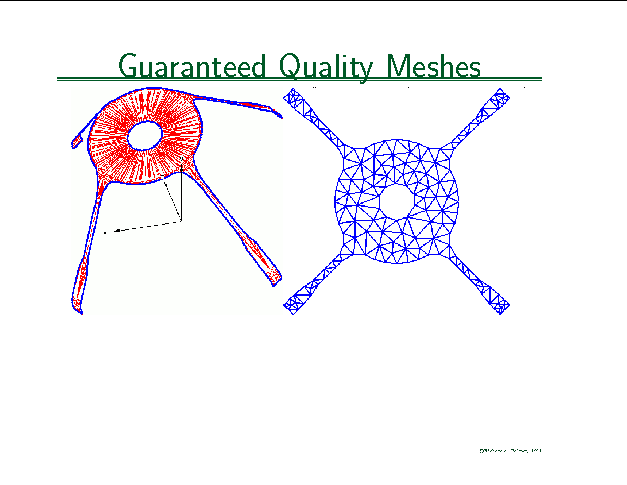
Let's consider now the problem of solving the elasticity problem. The geometry of the domains is specified, in this case, with files that specify a list of triangles that represent the boundary of the solids.
The triangulations we generated by the Alpha 1 system, and were intended as input to a stereolithography system. We can see from inspection that the triangulation consists of many thin triangles.
As it turns out, such a triangulation is not particularly suitable for analysis, for instance, using the finite element method. It turns out that the numerical stability of FEM depends on the shapes of the triangles on which it is based. Thus instead of long skinny triangles, we would like triangles that have as small an aspect ratio as possible.
A member of our group, Paul Chew, has been working on methods for triangulating flat and curved surfaces. These methods are based on Delaunay triangulations. The important aspect of these algorithms is that they come with a guarantee - they are guaranteed to create triangulations whose aspect ratios do not exceed a fixed bound - no angle will be greater than 120 degrees.
Size may be specified by the user. In this example there is a size-function defined for the entire region (which causes yellow triangles). There is also a size specified for the inner boundary (which causes blue triangles).
The Chew mesher is one of a small number of techniques for meshing curved surfaces. It is the only one that provides a guarantee about the quality of the resulting mesh. Without such a guarantee, a human must inspect the mesh, which is too expensive and too time-consuming. (Human beings are not getting twice as fast each year!)